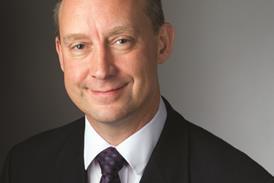- New NHS spending figures show real terms reduction in community services and large growth in primary care
- Community service leaders say it shows a poor starting point for plan to improve out of hospital care
- Much of primary care growth said to be in non-recurrent national schemes
- New GP contract deal to set out future growth imminent
Community health service spending by the NHS has been cut over the past two financial years, while primary care saw large real terms increases, according to data newly released by NHS England.
Sector leaders said the cut to community services spend – of 0.6 per cent in real terms between 2015-16 and 2017-18 – showed the poor starting point for national ambitions to expand the services.
NHS England has previously declined to release information on its own and clinical commissioning groups’ spending on different service areas, but some has now been disclosed in response to an MP’s question.
According to this information, primary care spending boomed in these years – rising in real terms by £3.8bn between 2015-16 and 2017-18, with real terms growth of 12 per cent then 17 per cent in 2016-17 and 2017-18 respectively.
Nigel Watson, chair of the recent GP Partnership review for the government and member of the British Medical Association’s GP committee, told HSJ there had been large increases as the figures showed, but much was for discrete national schemes like extended hours. It should become recurrent annual spend for bolstering core primary care staffing, he said.
Several commissioning finance officials said the pattern in the NHSE figures was reflected in their area, although the very large primary care growth was likely to be down in part to recording quirks, as well as genuine increases.
A new GP contract deal, including a primary care network contract, is due to be confirmed imminently, with an expectation it will aim to increase primary care spend further over several years.
Community cut
Community health was the only service area covered in the newly released figures which saw a real terms cut, of £46m (0.6 per cent), between 2015-16 and 2017-18. Mental health – as shown in previously published figures – grew a little more than the NHS overall, while acute care spend grew a little less (see table below).
Several commissioners told HSJ this reflected their experience. Community health leaders pointed out that their non-NHS income, from local government for public health services, was falling more steeply still and – unlike NHS contracts – was not currently due to be increased in 2019-20 to fund increased pay costs.
The NHS long-term plan published this month identified out of hospital services, particularly for frail and older people, as a top priority, and said that “primary medical and community services will grow faster than the overall NHS budget”. NHS England has declined to specify how this will be measured, but the new figures suggest that according to its own numbers, this bar was easily exceeded in both 2016-17 and 2017-18.
Matthew Winn, chair of the Community Network, and chief executive of Cambridgeshire Community Services Trust, said he believed the long-term plan reflected a genuine recognition that services had come under too much pressure, and a commitment to fund them. But he added the new figures confirmed “the new investment is coming into a sector that’s shrinking – therefore, it is much more difficult to implement the aspirations of the long-term plan”.
“I hear a lot more recognition of the challenges… But the starting point is services are shrinking in income terms, and that masks massive demographic volume increases being absorbed each year.”
Central London Community Healthcare Trust chief executive Andrew Ridley said: “The commitment in the long-term plan to grow community spending is really, really welcome.
“There is no detail in plan about how that disproportionate growth is intended to flow, though. There’s a lack of clarity around the start position and how to track it is gloriously unclear.”
NHS England declined to comment.
Commissioner spend*
| £m in 2017-18 prices, real terms growth | 2015-16 spend | 2016-17 spend | 2017-18 spend | % change 2015-16 to 2016-17 | % change 2016-17 to 2017-18 | % change 2015-16 to 2017-18 |
|---|---|---|---|---|---|---|
| Acute | 39,897 | 40,905 | 41,411 | 2.5% | 1.2% | 3.8% |
| Mental health | 7,616 | 7,779 | 8,053 | 2.1% | 3.5% | 5.7% |
| Community | 7,394 | 7,257 | 7,348 | -1.9% | 1.3% | -0.6% |
| Continuing Healthcare | 4,482 | 4,673 | 4,547 | 4.3% | -2.7% | 1.4% |
| Primary | 12,647 | 14,146 | 16,474 | 11.9% | 16.5% | 30.3% |
| NHS England net operating expenditure** | 104,525 | 106,750 | 108,764 | 2.1% | 1.9% | 4.1% |
*Category spending figures are from NHS England via Department of Health and Social Care, in written parliamentary answer to Paul Williams MP. Net operating expenditure from NHS England accounts.
**The figures released do not include all categories of spend, for example specialised services - including specialised mental health - and GP prescribed medicines are excluded, so should not add up to total NHS England operating expenditure.



























6 Readers' comments